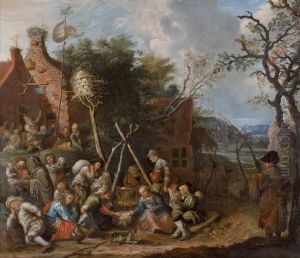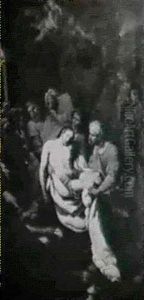Francesco Boschi Paintings
Francesco Boschi was an Italian painter of the Baroque period, born in 1619 in Florence, Italy. Although not as widely known as some of his contemporaries, Boschi made significant contributions to the Florentine art scene of the 17th century. His style was characterized by a dynamic use of color and light, and he was particularly adept at creating dramatic, emotionally charged religious scenes.
Boschi received his artistic training in the workshop of a lesser-known painter, Giovanni Biliverti, who himself had been a student of the prominent Mannerist artist Alessandro Allori. Through Biliverti, Boschi was exposed to the late Mannerist style, which would have a lasting influence on his work. However, as Boschi developed his own artistic voice, he began to incorporate the more naturalistic and dynamic elements of the burgeoning Baroque style.
Throughout his career, Boschi worked on various commissions for local churches and private patrons. One of his most notable works is the 'Annunciation' at the Church of San Francesco dei Macci in Florence. This painting showcases his skill at depicting divine light and creating a sense of heavenly intervention in earthly realms. His work often depicted religious themes, which was typical for the period, and his paintings can be found in several churches in Florence and its surrounding areas.
Boschi's work was not limited to religious paintings; he also painted mythological scenes and was known for his portraiture. However, his portraits are less documented and studied than his religious works. Boschi's contributions to the Florentine art scene were part of a larger movement in the Baroque period that saw a shift towards a more emotional and theatrical approach to art, moving away from the more rigid and intellectualized style of the Renaissance.
Despite his talent, Boschi did not attain the same level of fame as some of his contemporaries, such as Caravaggio or Bernini, and as a result, his works have not been as thoroughly documented or preserved. Nevertheless, for those studying the Baroque period in Florence, Boschi's paintings offer valuable insight into the artistic transitions of the time.
Francesco Boschi died in 1675, leaving behind a modest but important body of work that continues to be of interest to art historians and collectors who specialize in Italian Baroque painting. His works are occasionally displayed in art exhibitions that focus on this period and region, allowing a contemporary audience to appreciate his artistic contributions.

